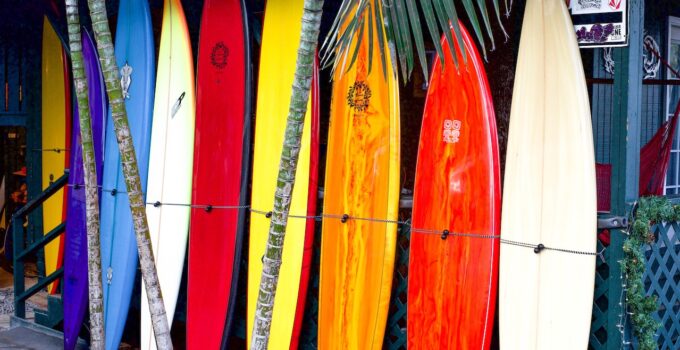Choosing the right surfboard makes a difference in learning to catch and ride waves. Your age, weight, fitness level, and ability are relevant to the decision. The types of waves and beaches you surf matter, too. Regardless of your goals, the beginning is the only place to start. Choose an appropriate board for the surfer you are now, not the one you hope to become. Be realistic about your ability and how often you will get out into the waves to practice. You’ll have much more fun on a board suited to your level than on an advanced board.
Know What Type Of Surfer You Are Now
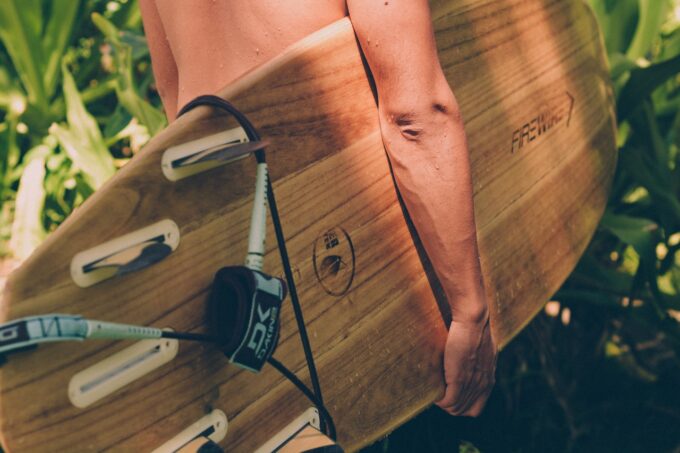
Source: pexels.com
Pick a surfboard for you and your body. Your age, weight, and fitness level will play an essential part in your decision, and so will the types of waves and beaches you surf in and your ability. Your surfboard is a mirror of you, so pick one appropriate for the surfer you are now and not the one you want to become.
Your First Surfboard Should Be Cheap
While learning how to surf, you’ll ding and scratch a board if you put it to use, so don’t spend too much cash. A $400 surfboard will ding as easily as a $100 surfboard. It’s not about looks, so ignore minor yellowing and small dings.
However, dings that show foam or any delamination should be avoided. As a beginner, you’ll beat the heck out of your surfboard, so pay the least amount of cash possible.
Buy Surfboards from surfari.ch for the best experience.
Your First One Should Be Big and Thick
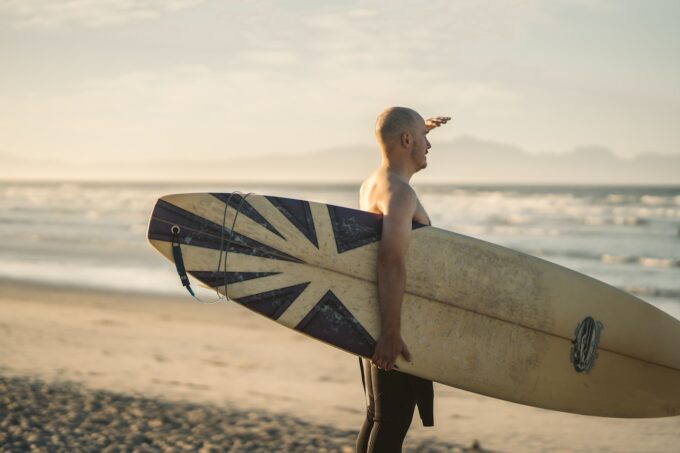
Source: pexels.com
All the cool girls and guys have small, narrow surfboards, right? So what! You’re not cool yet. Get a board that will give flotation and allows for easy paddling.
A good average size board for a beginning surfer would be around 7 feet long and 19-21 inches wide, and at least 2-3 inches thick. This depends on your size, so be sure you can comfortably carry and wield the surfboard in the water. Just make sure it stands at least a foot taller than you.
Generally, a 120-pound surfer should look for a 6 feet 10-inch board, while a 140-pounder might look towards a 7 feet 2-inch board. At 170 pounds, try to go above 7 feet 6 inches.
Beginner Surfboard Dimensions
The dimensions of a board are the measurements of its length, width, and thickness. When choosing a beginner board, a general guideline is the bigger the person, the bigger the surfboard.
The motto is the more waves you catch, the quicker you will progress! A giant board will allow you to catch more waves.
How To Determine The Volume?
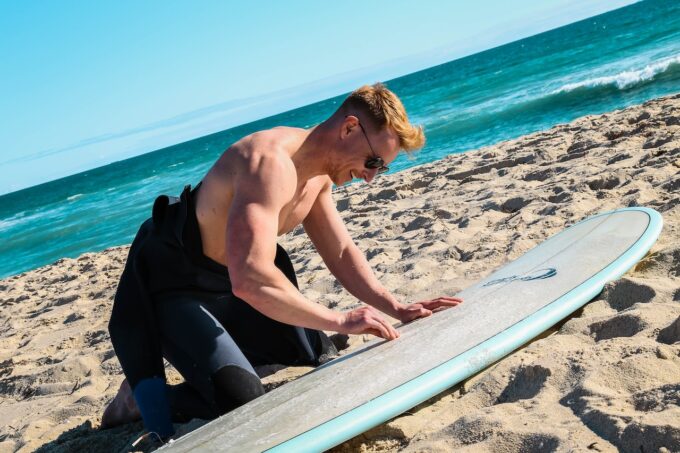
Source: pexels.com
Surfboard volume is measured in liters. For example, an 8’2 may have 70 liters, whereas a shortboard might only be 28 liters. It is suggested that beginners stay in the higher volume range for more stability because more volume will help them catch more waves. Some sites can help you determine whether the volume of a surfboard is right for you based on your weight and surfing experience.
Does The Shape Matter?
If you are progressing from beginner lessons to surfing independently, don’t get too caught up on the board’s shape or fin configuration. However, the width is essential, as a nice wide board will give you a stable platform to pop up on. It is recommended to choose a board around 20-23″ inches wide.
What Is The Best Material For A Surfboard?
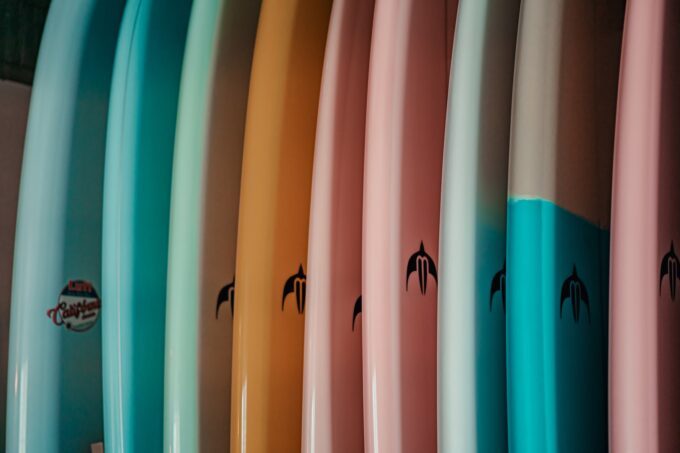
Source: unsplash.com
If you have taken lessons, you probably have experience with soft top surfboards. These boards are stable and durable. Once you are getting to your feet most of the time and beginning to turn, you are probably ready for a hard top made of epoxy or polyurethane. If properly maintained, a hard top one will last a long time and allow for more progression than a soft top.
How Long Should A Board Be?
A longer board will help provide floatation and increase your wave count. It is recommended to consider a funboard or a longboard. A funboard is typically any full-volume board between 7′ and 8′ in length, which is a good option if you are starting to work on carving. A longboard is anything over 8′. While shortboards are great for high-performance surfing, they are not recommended for beginners.
Does The Price Matter?
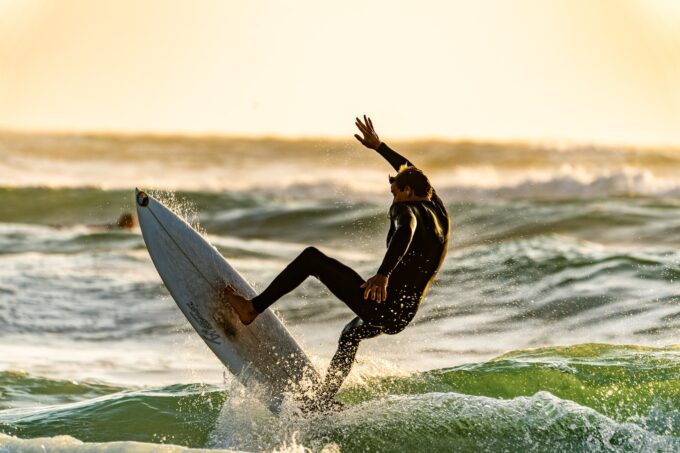
Source: unsplash.com
Don’t spend a lot of money on your first board. Think of getting a car for a new driver. You wouldn’t (usually) buy a teenager a Porsche, right? You would get them something less performance-driven to develop their driving skills, and it wouldn’t matter if they put a few dings in it. The same goes for buying your first surfboard.
However, remember that you don’t want the cheapest board around. A quality surfboard is invaluable to get the proper foundation you need to progress. If you buy used, minor yellowing and dings aren’t a big deal but avoid purchasing a board that needs repair. When a surfboard has foam showing or has delamination, the foam will soak up water, become heavy, and break from the inside out.
These are the basic rules for choosing your first surfboard. Don’t stop at a local surf shop and talk to the professionals instead. Also, if you have taken surf lessons and liked your surf instructor, ask that coach for guidance. Those in the industry can be a wealth of knowledge!
Bottom Line
Several companies make soft surfboards with a bodyboard-like material, and the fins are flexible to help prevent injuries while learning your craft. This is an excellent way to get the kids up and riding without a ride to the emergency room.
These are the most basic rules for choosing your first surfboard. It doesn’t matter if you buy a board from a friend, a local surf shop, or on the Internet; find a giant, cheap board that you can carry to the beach, get stoked, and learn how to surf.

